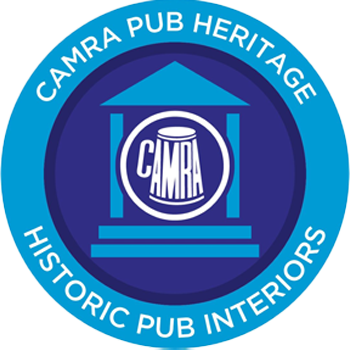This website is currently in beta. If you wish to go back to the current site please click here. To provide feedback or find out more about this site, please click here.



14C probably the city's oldest inn with records dating back to the `Ray D'Or'. The property was bequeathed to the Trinity Hospital in 1380. In 1475 the tenants Roger Marsh and Dionysia Pyre received the inn on payment of one red rose annually. Single L-shaped room with bare floorboards and large open fireplace. The pub retains its original atmosphere and in addition specialises in excellent Thai food that is served at all opening times. Two beers from local microbreweries, frequently including Stonehenge or Downton. Local CAMRA Town Pub of the Year 2018, 19 years in the GBG.
One star - A pub interior of special national historic interest
Listed status: II
According to Historic England, the building dates from the mid-16th century, though it has been much altered. The interior has been opened out into a single L-shaped room with bare floorboards and a large open fireplace; modern wooden screens break up the space into three areas. The Brown Street door leads, via a small vestibule, to the bar area where the counter has old wooden panels but the bar-back is modern. Along the back of the room is fixed bench seating and this, rather oddly, extends along the wall past the edge of the fireplace into a very small alcove. The other entrance, from Trinity Street, brings you to an area with an inter-war fireplace and some more bench seating. The establishment operates more as a Thai restaurant these days.
This pub is a modest-sized single-room L-shaped bar, with surviving elements of partitions showing how the room was originally divided into three. The semi-partition on the street side of the bar, dividing the space with the main bar counter from the long arm of the L, is old with white painted wooden panelling which forms one side of a surviving vestibule. A modern, trellised partition has been added more recently above, and extending slightly beyond, the bar. n the centre of the long arm of the L is a fire-place and old chimney (no longer in use) effectively constituting another partial division of this space into two, with a wide gap between the fireplace and the corner of the counter. The fireplace just mentioned faces into the “heel” of the L, meaning that each of the former spaces would have had its own fireplace, although there appear only ever to have been two external doors. The pub has wooden flooring throughout.
The main bar counter appears to be inter-war with wooden panelling: the recessed rectangular centre panels have been painted white, but the bars separating them are varnished. There is surviving wall panelling, largely painted white, and wooden fixed seating with unusual spindled legs, which extends into an alcove to the left of the fireplace. This large and apparently very old fireplace and hearth is now unused. A (1970s?) mural of a stone circle with a celtic-style wreathed border has been painted on the chimney breast. Similar wreathed patterns decorate the ceiling beams.
At the end of the long arm of the L there is a bricked-up fireplace with wooden surround that could be inter-war. There is also surviving fixed seating in this area in the form of a settle-type unit. Some leaded windows survive, although some have been replaced by modern imitations. The short end of the counter which faces into this area is of similar style and age to the longer counter in the base of the L. Fixed seating survives also in the space in the heel of the L, with a mural apparently of Stonehenge, above the small disused fireplace. Panelling in these two areas is painted white below the dado, varnished above it.
You must be a Digital Subscriber or CAMRA Member to be able to view specially curated GBG descriptions

This Pub serves 1 changing beer and 0 regular beers. Usually one local and one national
Rai d'Or, Salisbury
Source: Local
With an unmistakable cover design, we are excited to announce that the foreword for this year’s Good Beer Guide has been penned by Bruce Dickinson, frontman and lead singer of Iron Maiden. © Campaign for Real Ale – Bruce Dickinson...